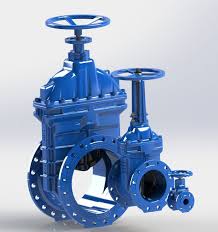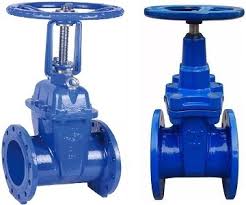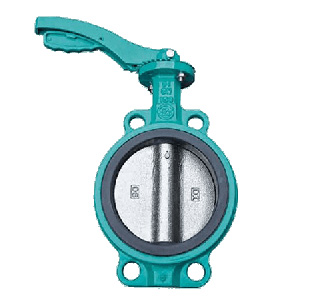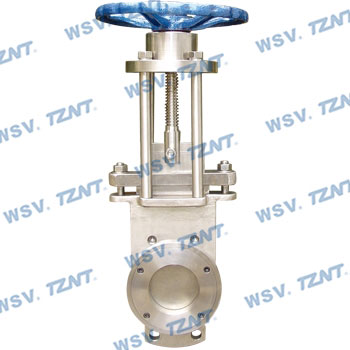Ductile Iron Gate Valve

The Application of Ductile Iron Gate Valve
Ductile Iron Gate Valves offer superior performance in fluid control compared to ball valves, especially in scenarios where a stuck gate valve might disrupt operations. Unlike ball valves, which rely on a rotating mechanism, Ductile Iron Gate Valves feature a rising stem design, ensuring straightforward operation and reliable flow regulation. Renowned brands like Rotork and Cameron provide top-quality Ductile Iron Gate Valves, known for their robust construction and dependable performance. These valves find extensive applications in pipelines, water treatment facilities, irrigation systems, and various industrial processes, delivering durability, reliability, and cost-effectiveness where they’re needed most.
What Is Ductile Iron Gate Valve?
A Ductile Iron Gate Valve is a type of valve primarily used to control the flow of fluids in pipelines and other industrial systems. Unlike ball valves, which use a spherical disc to regulate flow, gate valves employ a sliding gate or wedge mechanism. The gate of a Ductile Iron Gate Valve moves up and down along the valve’s axis to open or close the passage. This design offers precise control over fluid flow and is particularly effective in applications where a tight seal and minimal flow restriction are essential. Ductile iron, known for its high strength and durability, is commonly used in the construction of these valves, ensuring reliable performance even in demanding environments.
Features of Ductile Iron Gate Valve
- Visual valve switch easily;
- Quick opening and closing, light torque;
- Brass nut wear-resistant, long switch life;
- Fully covered with EPDM disc, resistant to corrosion.
Advantages of Ductile Iron Gate Valve
- Basic Function: A Ductile Iron Gate Valve controls fluid flow in pipelines and industrial systems.
- Design Comparison: Unlike ball valves, which use a ball-shaped disc, gate valves employ a sliding gate or wedge.
- Operation Mechanism: The gate of this valve moves up and down to open or close the passage.
- Benefits: This design provides precise flow control and is effective where tight sealing and minimal flow restriction are crucial.
- Material: Ductile iron, known for its strength and durability, is commonly used for construction.
The Specifications of Ductile Iron Gate Valve
| Specification | Details |
|---|---|
| Type | Gate Valve |
| Ball Material | N/A |
| Attachment Type | Flange |
| Thread Standard | N/A |
| Thread Size | N/A |
| Body Material | Ductile Iron |
| Safe for Use With | Various fluids and gases |
| Handle Type | Handwheel |
| Handle Material | Iron or Steel |
| Maximum Working Pressure | 150 psi |
| Maximum Working Pressure | 10 bar |
| Operating Pressure | Depends on application |
The Parameter of Ductile Iron Gate Valve
- Material: Ductile iron is the primary material used for the body of the gate valve.
- Design: The gate valve features a rising stem design, where the stem rises and lowers as the valve is operated.
- Application: Typically used in applications where a straight-line flow of fluid and minimum restriction is desired.
- Sealing: Equipped with resilient seat seals to ensure tight shut-off and prevent leakage.
- Operation: Operated manually using a handwheel, providing simple and reliable control over the flow of fluids.
- Pressure Rating: Suitable for handling pressures up to 150 psi (10 bar), depending on the specific model and size.
- End Connections: Typically designed with flanged ends for easy installation and connection to piping systems.
- Size Range: Available in various sizes to accommodate different pipeline requirements.
- Corrosion Resistance: Ductile iron construction provides excellent resistance to corrosion and environmental wear.

The Operation Theory of Ductile Iron Gate Valve
The operation theory of a Ductile Iron Gate Valve is straightforward. When the valve is in the open position, the gate, which is connected to the stem, lifts to allow fluid flow through the gate valve. Conversely, when the valve is closed, the gate lowers to block the flow of fluid. The rising stem of the valve provides a visual indication of the valve position. In the event of a leaking gate valve, the gate is not sealing properly, allowing fluid to pass through even when the valve is supposed to be closed. In larger sizes, such as a gate valve 12 inch, the operation remains the same but may require more force to actuate due to the increased size and weight of the components.
The Parameters Table of Ductile Iron Gate Valve
| Parameter | Description |
|---|---|
| Type | Ductile Iron Gate Valve |
| Ball Material | N/A |
| Attachment Type | Flange, Threaded, Welded |
| Thread Standard | N/A |
| Thread Size | N/A |
| Body Material | Ductile Iron |
| Safe for Use With | Water, Oil, Gas, Various Fluids |
| Handle Type | Handwheel, Gear Operated, Actuated |
| Handle Material | Cast Iron, Stainless Steel |
| Maximum Working Pressure | PSI, Bar |
| Maximum Working Pressure | Varies based on valve size and specifications |
| Operating Pressure | Depends on application requirements |

